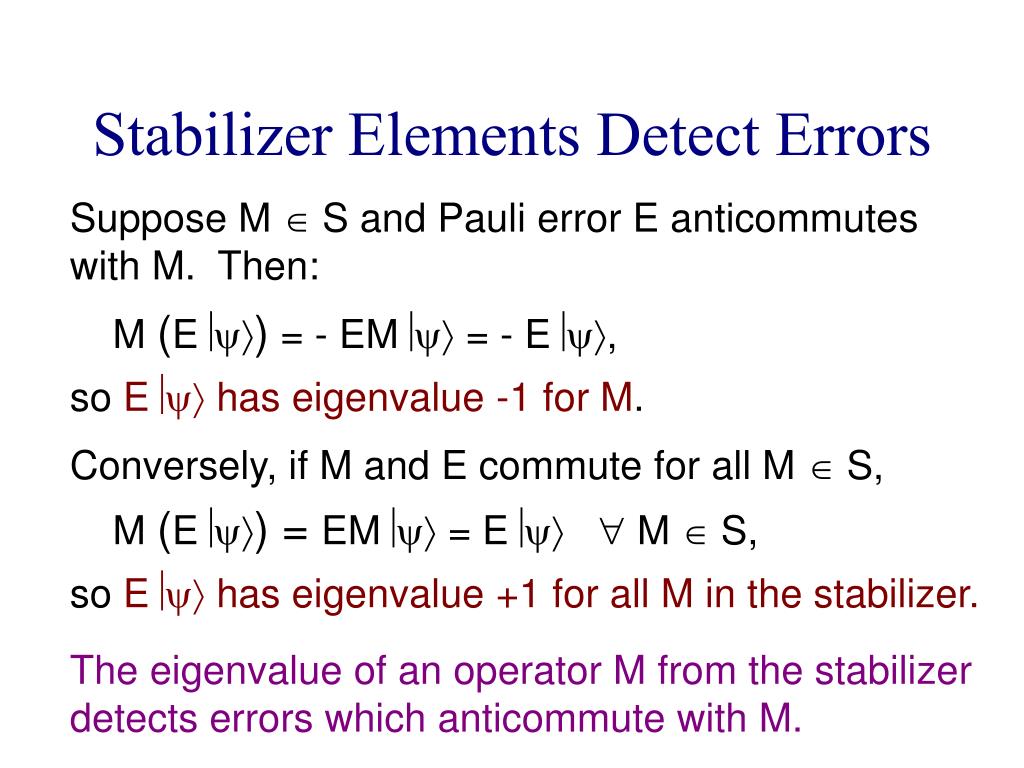

Finally, all involved states – code space and states after bit flip errors – are eigenstates and therefore the measurement process does not collapse a superposition of these states and can therefore be executed without interfering with the actual quantum algorithm that we want to run. The syndrome measurement can be done by measuring both operators simultaneously, which is possible because they commute. The code space is the subspace which is left invariant by these operators. These properties allow us to express the three bit code entirely in terms of the operators M 1 and M 2. Finally, the two operators commute and can therefore be measured simultaneously. Thus, errors correspond to violated constraints.

Moreover, if a bit flip error occurs, the resulting state will again be an eigenvalue, but for at least one of the operators the new eigenvalue will be -1. We can think of these operators as defining linear constraints that together define the code space, as indicated below. Second, the logical states are eigenvectors of these operators with eigenvalues +1 and the code space is exactly the subspace of the three-qubit state space that is fixed by M 1 and M 2. First, they are hermitian and therefore correspond to measurements. Let us now write down a few properties of these operators. Similarly, to also detect a bit flip on the third qubit, we need a measurement for a second operator, namely Thus, a measurement of this operator will tell us whether a bit flip on the first or second qubit has occurred. The states that result out of a bit-flip error are also eigenstates of this operator, but with eigenvalue -1. The error-free logical states are both eigenstates of this operator with eigenvalue +1. Where the upper index on a Pauli matrix indicates the qubit on which the operator acts. This error will modify our logical states as follows (the first two lines represent a bit flip on the first qubit, the next two lines a bit flip on the second qubit Suppose, for instance, that a bit flip occurs on the first or second qubit. A single bit flip error will flip one of the three involved qubits. These logical states span our two-dimensional code space and describe one logical qubit. To introduce and motivate the formalism, let us for a moment come back to the simple example studied before – the three-bit code. This post will be a bit more formal, but is a necessary preparation to be able to define and understand the surface code and other topological codes. The link between these geometric constraints and the theory of quantum error correction is the stabilizer formalism described first in. In reality, however, this is not true – only nearby qubits and interact, and our error correction needs to take the geometric arrangements of the qubits into account.

In our previous discussion of quantum error correction, we have assumed that quantum gates can act on any two physical qubits.


 0 kommentar(er)
0 kommentar(er)
